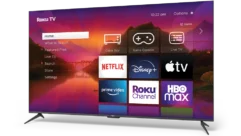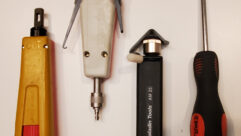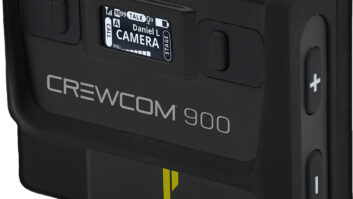
Picture This: The Big Show
Sep 1, 2007 12:00 PM,
By Jeff Sauer
NSCA and InfoComm International combine their tradeshows to better serve the industry.

In August, InfoComm and NSCA announced that they would combine their two tradeshows after a recent study showed that there was a large overlap of attendees and exhibitors participating in both shows.
The announcement that NSCA and InfoComm International will be combining the NSCA Expo and InfoComm tradeshows starting next year should probably come as both major news and really not much of a surprise. These shows are well-established events in our industry, and merging them represents a major change. Yet the industry is growing, and having one strong annual convention makes a lot more sense.
According to the announcement, NSCA and InfoComm International will remain separate organizations and will continue to offer targeted education and advocacy to members. However, NSCA Expo, which had been scheduled to be in Dallas in 2008, has now been canceled, and it will be integrated into InfoComm next year and beyond. Similarly, NSCA has also transferred ownership of the Integrated Systems Europe (ISE) show to the remaining partners.
The merger marks the end of a generation of the two tradeshows co-existing. NSCA Expo dates back to 1981, when it started as a sound contractor pavilion within the Electronic Distribution Show (EDS). In 1985, NSCA — then known as the National Sound and Communications Association — went its own way and created the NSCA Expo as a separate tradeshow that year in Orlando, Fla. In 1994, the organization reformulated the NSCA acronym to National Systems Contractors Association to reflect the broader reach of the low-voltage-installation industry.
InfoComm as we know it today started in 1989, but its tradeshow history goes back to the 1950s. It was called NAVA (for National Audio Visual Association) until 1977 and then COMMTEX until that name was legally challenged by the once-mighty COMDEX computer-industry tradeshow. Today’s InfoComm International has roots going back to 1939 with the formation of the National Audio Visual Educational Dealers Association (which became NAVA in 1949), when the precursors to today’s technology were making their way into schools.
That education focus has always been and remains a large part of both NSCA and InfoComm. It’s certainly possible that — as our industry changes — NSCA and InfoComm could become one organization entirely in the coming years. For now, they still focus on different aspects of the broad installation business by providing educational programs, training, and certification to help members stay current with technology and expand their business opportunities.
However, the two shows have increasingly witnessed significant overlap. According to the most recent statistics from NSCA, as many as 80 percent of the exhibitors of NSCA participate in both shows, and as many as 78 percent of the attendees of the smaller NSCA show also attend InfoComm — a trend that has been growing for the last five years. In other words, manufacturers are paying to reach the same people twice, and in a relatively short and less-rewarding time frame.
For many, the early-year tradeshow schedule is wearing: beginning for display makers in January with CES, then NSCA in March, NAB in April, and InfoComm in June. That grind is both exhausting and expensive, requiring companies to ship personnel and freight across the country several times over the first half of the year. More cryptically, it begs many companies to question the value of participating in all the events or, minimally, to make awkward choices about which products to bring to each show and what announcements to highlight at each. NSCA’s smaller size does afford more relaxed conversations and — for the last couple of years — it offered a wonderful forum for emerging digital signage companies. Ultimately, though, attendees were only seeing a partial portfolio of available products and solutions, both from the individual companies and from across the industry. Even the targeted pavilions, such as digital signage, haven’t been able to combat the simple economics facing the marketing budgets of many companies.
ONE SHOW FITS ALL
Next June, a stronger InfoComm will give manufacturers a bigger circle on their yearly planning calendars and should allow companies to display more of their solutions. New product announcements — rather than being spread out through the first few months of the year — are likely to be focused around June, which should make future InfoComm shows even more grand and more complete than in past shows.
For the last several years, these two industry tradeshows have been spread out geographically. While there have been many well-documented ways in which NSCA and InfoComm haven’t cooperated all that well with each other, the two shows have been deliberate about moving back and forth across the country, thereby allowing a broad base of industry participants to attend at least one of the two each year. When one event has been in Las Vegas, the other has typically — thankfully — been in eastern cities such as Atlanta and Orlando. That’s not necessarily a quip against Vegas (although if you see it that way, I’d certainly not argue), but rather a recognition that the members of our industry are spread out all over the country. It’s not clear how much of the 78-percent-attendee-overlap statistic is an annual one, but I’d be willing to bet that it includes some percentage of attendees who visit the two shows only on one coast.
Anyone who has recently attended CES or NAB knows the downside to large, sprawling tradeshows. The breadth of products can be downright confusing, and you couldn’t possibly see them all even if you wanted to. Thankfully, at roughly 31,000 attendees, InfoComm has a long way to go to reach the sprawl of CES (143,000) or NAB (108,000).
More importantly, a more robust InfoComm show combining the nuts and bolts of the low-voltage industry with the audiovisual products of InfoComm should better serve the members of both organizations. The installation world has changed significantly since NSCA Expo and InfoComm first began — most notable is the immersion of digital technology into almost every aspect of information communication and display — and success today requires a thorough understanding of both industry sectors.
Certainly, both NSCA and InfoComm International have worked independently for years to make our industry strong through education, advocacy, and tradeshows — and those efforts are to be commended — but today’s AV installations need to find more common ground with IT professionals if they’re going to continue to survive and thrive. The merging of NSCA Expo and InfoComm is ultimately a sign of the industry maturing and becoming, overall, more focused on the needs of sound and video contractors looking to stay ahead of a burgeoning industry.










